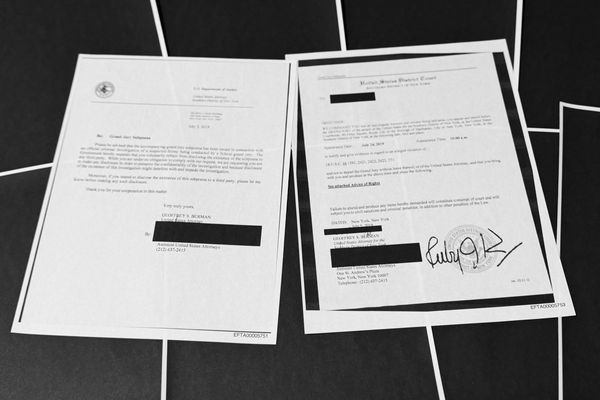
Data from Kelley Blue Book shows that the average price for a new vehicle in the United States is now at $50,080. This is the first time in history that the average price for a new vehicle has exceeded $50,000 — and it has pulled up the average monthly payment dramatically as well.
Be Aware: The 5 Car Brands Named the Least Reliable of 2025
Check Out: 6 Safe Accounts Proven To Grow Your Money Up To 13x Faster
While this lofty price point used to be the domain of luxury vehicles like Porsches and Lamborghinis, now it’s simply the average price tag that every American must face. But this doesn’t mean you’ll have to plop down this princely sum for your everyday Subaru. In fact, there’s a lot more going on under the hood that’s important to know.
Also see how to lower your car payment before and after buying a car.
Reasons Car Prices Are So High
There have been some obvious reasons car prices have nudged higher in recent years. The most apparent are supply chain issues and inflation.
When the COVID-19 pandemic shut down the world in 2020, supply chains were torn apart. It took years for the global economy to make repairs, and even now, supply chain pressures have continued to push up prices for vehicles. As the economy recovered from 2020, growth was so intense that inflation skyrocketed, topping 9% in June 2022, according to the Bureau of Labor Statistics. This was one of the main drivers for the increase in vehicle prices.
But as with many reported “averages,” the $50,080 average price for a new vehicle may not be exactly what you think. In fact, there are still plenty of everyday cars you can buy for much less than $50,000.
One of the reasons the average is so high is Americans have been buying large numbers of trucks, SUVs and electric vehicles. Most of these are higher-priced vehicles, so their purchases tend to skew the average higher. Add in the luxury vehicles that Americans continue to buy, and the average goes even higher.
In fact, according to Kelley Blue Book, roughly 7.4% of all vehicles sold in September 2025 had transaction prices above $75,000. These sales can dramatically increase the reported “average price,” perhaps misleading some into thinking that most mainstream vehicles are priced at $50,000 or more.
Still, inflation, supply chain issues, and even good old-fashioned supply and demand have been pushing up the average cost of lower-priced cars as well. If you haven’t bought a car in the last five years, you might be in for sticker shock when it comes to financing a new vehicle, regardless of its make or model.
Read Next: 7 Cars Middle-Class Retirees Should Avoid at All Costs in 2025
How High Are Monthly Payments?
Kelley Blue Book reported that as of the end of September 2025, the average monthly payment for a new vehicle increased to $766.
However, if you take that $50,080 average new car price, the monthly payment looks a bit higher. According to CNBC, a vehicle that costs $50,080 with a 60-month loan, 20% down payment and 7.12% interest rate would cost the buyer $796 in monthly payments. Additionally, for some Americans, Edmunds reported that payments are even higher, with 19.3% locked into loans requiring $1,000 or more monthly.
Depending on the price of the vehicle, your creditworthiness and how good you are at negotiating your loan interest rate, you might end up with a payment that’s even more.
How To Manage Higher Prices and Payments
To combat high monthly vehicle payments, you’ll have to be proactive. Not only are vehicle prices higher, but your dealer and finance company are going to try to make as much money as possible from your deal as well.
Here are some steps you can take to keep payments manageable.
- Set a strict budget: It’s all too easy to fall for higher-priced vehicles or pricey add-ons when you’re at a dealership, all of which will add to your cost. Before you even step onto a car lot, have a firm maximum price in mind.
- Don’t overextend your loan: The longer your loan term, the lower your monthly payments. But if you extend a loan out to 72, 84 or even 96 months, as some buyers do, you’ll be buried in interest. In these scenarios, you might even end up “underwater,” where the size of your loan ends up exceeding the value of your car.
- Shop around for better loan terms: Although it’s very convenient to finance your car through a dealership, you can usually get lower interest rates and/or better overall terms from a credit union or outside lender. A lower rate can dramatically reduce the amount you end up paying for a vehicle.
- Buy a used vehicle: While you’ll likely have to deal with higher maintenance costs, many used cars are extremely reliable and priced much more affordably than new cars. Remember, most new cars lose about 10% of their value the second you drive them off the lot, with depreciation averaging about 20% in the first year of ownership alone, according to Kelley Blue Book.
More From GOBankingRates
- 9 Costco Items Retirees Need To Buy Ahead of Fall
- 5 Ways 'Loud Budgeting' Can Make You Richer, According to Vivian Tu
- 5 Clever Ways Retirees Are Earning Up to $1K Per Month From Home
- 9 Low-Effort Ways to Make Passive Income (You Can Start This Week)
This article originally appeared on GOBankingRates.com: Average Car Prices Just Topped $50K for the First Time — Here’s What That Monthly Payment Looks Like







